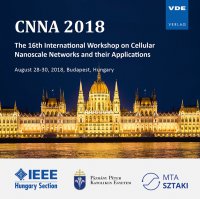1D Cellular Automata for Pulse Width Modulated Compressive Sampling CMOS Image Sensors
Konferenz: CNNA 2018 - The 16th International Workshop on Cellular Nanoscale Networks and their Applications
28.08.2018 - 30.08.2018 in Budapest, Hungary
Tagungsband: CNNA 2018
Seiten: 4Sprache: EnglischTyp: PDF
Persönliche VDE-Mitglieder erhalten auf diesen Artikel 10% Rabatt
Autoren:
Trevisi, Marco; Carmona-Galan, Ricardo; Rodriguez-Vazquez, Angel (Instituto de Microelectrónica de Sevilla (IMSE-CNM), CSIC-Universidad de Sevilla, Spain)
Inhalt:
Compressive sensing (CS) is an alternative to the Shannon limit when the signal to be acquired is known to be sparse or compressible in some domain. Since compressed samples are non-hierarchical packages of information, this acquisition technique can be employed to overcome channel losses and restricted data rates. The quality of the compressed samples that a sensor can deliver is affected by the measurement matrix used to collect them. Measurement matrices usually employed in CS image sensors are recursive random-like binary matrices obtained using pseudo-random number generators (PRNG). In this paper we analyse the performance of these PRNGs in order to understand how their non-idealities affect the quality of the compressed samples. We present the architecture of a CMOS image sensor that uses class-III elementary cellular automata (ECA) and pixel pulse width modulation (PWM) to generate onchip a measurement matrix and high the quality compressed samples.


